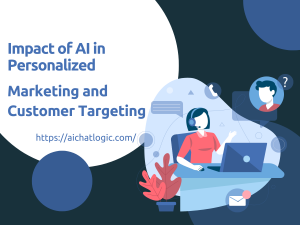1. The Evolution of Autonomous Vehicles
The concept of autonomous vehicles dates back several decades, but recent advancements in AI have propelled them closer to reality. Initially, autonomous vehicles were seen as a futuristic dream, but with significant investments and technological breakthroughs, they are now transitioning from concept cars to real-world prototypes and trials.
2. AI: The Driving Force Behind Autonomous Vehicles
Artificial intelligence serves as the backbone of autonomous vehicles, enabling them to perceive their surroundings, make decisions, and navigate through complex road scenarios. Through a combination of sensors, machine learning algorithms, and deep neural networks, AI systems analyze vast amounts of data in real-time, allowing the vehicle to interpret its environment and respond accordingly.
3. Enhancing Safety on the Roads
3.1 Leveraging AI for Advanced Driver Assistance Systems (ADAS)
Autonomous vehicles equipped with advanced driver assistance systems (ADAS) leverage AI to enhance safety on the roads. These systems use sensors and cameras to detect potential hazards, such as pedestrians, cyclists, or other vehicles, and provide real-time alerts or even take corrective actions to prevent collisions. By using AI, autonomous vehicles can react faster and more accurately than human drivers, potentially reducing accidents and saving lives.
3.2 Mitigating Human Error
Human error is a leading cause of road accidents. AI-driven autonomous vehicles have the potential to significantly reduce the impact of human error on road safety. With advanced algorithms and continuous learning capabilities, self-driving cars can minimize risks associated with distracted driving, fatigue, and impaired judgment, leading to safer roads for everyone.
4. Improving Traffic Efficiency
4.1 Optimizing Route Planning and Navigation
AI-powered autonomous vehicles can optimize route planning and navigation by analyzing traffic patterns, road conditions, and real-time data. By considering various factors, such as congestion levels, construction zones, and accidents, self-driving cars can choose the most efficient routes, reducing travel time and improving overall traffic flow.
4.2 Minimizing Traffic Congestion
Traffic congestion is a significant challenge in urban areas. Autonomous vehicles hold the potential to mitigate this issue by leveraging AI to synchronize traffic movements, regulate speeds, and optimize traffic flow. Through interconnected communication systems, self-driving cars can coordinate with each other, leading to smoother traffic patterns and reduced congestion.
5. Enhanced Accessibility and Mobility
AI in autonomous vehicles can revolutionize transportation accessibility for individuals with disabilities, elderly populations, and those who are unable to drive. Self-driving cars can provide a newfound sense of independence, enabling individuals to travel independently and access essential services without relying on others. This advancement has the potential to enhance mobility and inclusivity in our society.
6. Challenges and Concerns
While the promise of AI in autonomous vehicles is significant, several challenges and concerns must be addressed to ensure a safe and ethical implementation.
6.1 Safety and Liability
Safety remains a top concern when it comes to autonomous vehicles. Although AI systems are designed to prioritize safety, accidents involving self-driving cars have raised questions about liability and responsibility. Determining who is accountable in case of an accident and establishing a comprehensive safety framework are critical aspects that need to be addressed.
6.2 Privacy and Data Security
Autonomous vehicles generate vast amounts of data, including personal information about passengers, driving patterns, and location data. Safeguarding this data from unauthorized access, breaches, or misuse is crucial to maintain privacy and protect individuals’ rights. Robust data security measures and transparent data handling practices are necessary to instill trust among users.
6.3 Ethical Considerations
AI-driven autonomous vehicles encounter ethical dilemmas when faced with scenarios where there are no clear-cut right or wrong decisions. For instance, a self-driving car may need to make split-second decisions in life-threatening situations. Determining how autonomous vehicles should prioritize the safety of passengers, pedestrians, or other road users raises complex ethical considerations that require careful thought and public discourse.
7. Regulatory Framework and Legal Implications
The rapid advancement of autonomous vehicles has outpaced the development of comprehensive regulations. Governments and regulatory bodies worldwide need to establish appropriate frameworks to govern the deployment, operation, and safety standards of autonomous vehicles. Creating harmonized regulations will ensure consistency and provide clarity for manufacturers, consumers, and other stakeholders.
8. Public Perception and Acceptance
Public perception and acceptance play a crucial role in the successful adoption of autonomous vehicles. Educating the public about the benefits, safety measures, and ethical considerations of AI in self-driving cars is vital. Open dialogue, public trials, and transparent communication can help address concerns and build trust, ultimately leading to wider acceptance of this transformative technology.
9. Future Outlook
The future of AI in autonomous vehicles is brimming with possibilities. As technology continues to evolve, we can expect further advancements in AI algorithms, sensor technologies, and communication systems. The integration of 5G networks, augmented reality, and smart city infrastructure will further enhance the capabilities and effectiveness of autonomous vehicle. Continued collaboration between industry, government, and academia will be crucial to shaping the future of transportation.
10. Conclusion
AI-driven autonomous vehicles have the potential to revolutionize the way we travel, making roads safer, reducing congestion, and enhancing accessibility. However, to fully realize the promise of this technology, we must address the challenges associated with safety, privacy, and ethics. By establishing comprehensive regulations, fostering public trust, and engaging in responsible development practices, we can harness the transformative power of AI in autonomous vehicle for the benefit of society as a whole.
11. FAQs
Q1: Are autonomous vehicles completely safe?
A1: While autonomous vehicles have the potential to enhance safety, achieving complete safety is an ongoing challenge. The technology is continuously evolving, and rigorous testing and validation processes are necessary to ensure their safe deployment.
Q2: Can autonomous vehicles operate in all weather conditions?
A2: Current autonomous vehicles face limitations in extreme weather conditions, such as heavy rain or snowstorms. However, advancements in sensor technologies and AI algorithms aim to overcome these challenges and improve the performance of self-driving cars in adverse weather.
Q3: How will autonomous vehicles impact jobs in the transportation industry?
A3: The widespread adoption of autonomous vehicles may lead to changes in the transportation job market. While certain driving-related roles may be affected, new job opportunities can emerge in areas such as vehicle maintenance, data analysis, and AI development.
Q4: Will autonomous vehicles eliminate traffic congestion completely?
A4: While autonomous vehicles can contribute to reducing traffic congestion, eliminating it entirely may require a holistic approach involving infrastructure improvements, urban planning, and intelligent transportation systems.
Q5: What are the long-term environmental benefits of autonomous vehicles?
A5: Autonomous vehicles have the potential to improve fuel efficiency and reduce carbon emissions through optimized driving patterns, reduced congestion, and the adoption of electric or hybrid powertrains. These factors can contribute to a more sustainable and eco-friendly transportation system.












+ There are no comments
Add yours